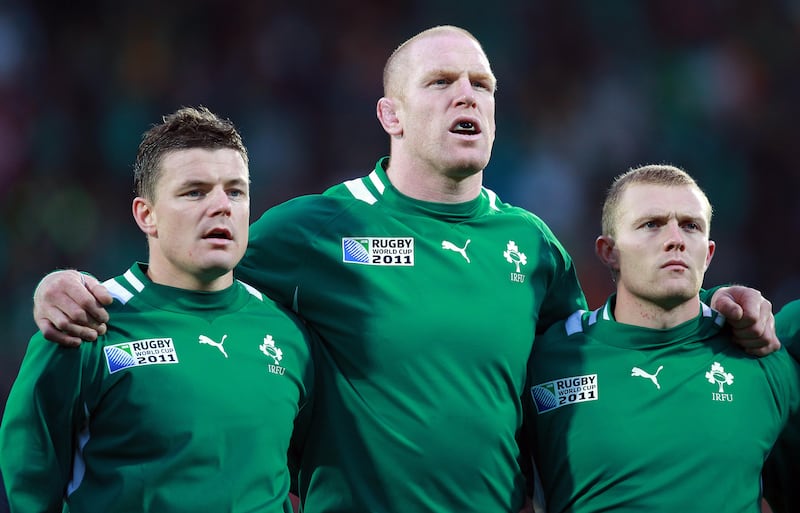Well, hope you enjoyed the week in Ballyconneely or Bundoran-sur-Mer. Door to door from Dublin with no range anxiety. Perfection. The car door open, sucking on a melting Brunch, waiting for the tee time. GAA on the weekend radio and soon Wimbledon.
All is as it should be. Some things never change. Except this summer international rugby can also be downloaded and spliced into the holiday soundtrack. This year it’s different, almost a 12-month enterprise.
On Monday, 42 Irish players will congregate at the High Performance centre on the Blanchardstown plains for the first block of preseason with the aftershock of La Rochelle and Leinster still resonating, the players stilled by the fallout and disappointment, with thoughts of what the hell happened still swimming in some heads.
The old enmities between the provinces will recede under Andy Farrell and the Irish banner, but summer rugby will begin.
READ MORE
Their down time over, the Irish squad will train at the Dublin base through June and July before the three-match series in which they will fine-tune preparations for the Rugby World Cup. They have home matches against Italy (Saturday, August 5th) and England (Saturday, August 19th) at the Aviva Stadium and a final fixture against Samoa at Stade Jean-Dauger in Bayonne on Saturday, August 26th. Then into the French cauldron.
It is a new international season that runs for three months from August until the end of October in Paris. Or, is that just too much of a stretch given the way the public mood has altered with regard to the chances of the number one ranked side making it past the World Cup quarterfinals for the first time?
Opinions are swirling around the notion of how Farrell is going to do in the World Cup what Leinster could not do in club rugby with largely the same set of players. That would be about a dozen Leinster starters.
Put Connacht’s Mack Hansen on the wing with Hugo Keenan at fullback and James Lowe on the other side. Munster’s Peter O’Mahony comes into the backrow with Caelan Doris and Josh van der Flier and fellow Munster man Tadhg Beirne muscles up alongside James Ryan in the secondrow and the Leinster team that lost in the Champions Cup final to La Rochelle could, with just three changes, be the Irish team taking the field against England in the middle of August.
Johnny Sexton remains an important cog, although if he is fit for the August matches (and assuming any sort of ban will not remove him from the World Cup) the question is whether he should be used competitively by Farrell until the business end of pool matches three and four, against South Africa and Scotland.
The upside is Farrell and his back room team has given nobody reason to doubt that he can change mindsets and performances in the face of better opposition. The historic 2-1 series win in New Zealand last summer, a clean sweep in the November Series, which took in a 19-16 win over Ireland’s World Cup Pool challengers South Africa as well as a 13-10 defeat of Australia, and a Grand Slam in the Six Nations ended a perfect 10-month run for Farrell and the 16 others in his back room team.
Of those, Simon Easterby, Paul O’Connell, Mike Catt and John Fogarty are the most prominent, although high-performance analyst Vinny Hammond should play a discreetly pivotal role. Either way, part of Ireland’s progress, beginning next week, is likely to involve identifying exactly what went wrong for Leinster in their one-point defeats to Munster and La Rochelle. The group is too influential to leave that elephant in the room.

What happened again in Leinster’s trophyless season is also redolent of what has happened to Ireland in previous World Cup tournaments. Despite the talent, Ireland remain seven-time quarter-finalists. Not even the golden generation of Brian O’Driscoll and O’Connell could live up to expectations on the sport’s biggest stage.
Four years ago, many of the current group of players failed to deliver the elusive semi-final place at Japan 2019 despite going into the tournament ranked the same as they are now, number one in the world.
Ireland had won the previous five meetings against Argentina leading into the RWC 2015 quarter-final in Cardiff. But Joe Schmidt’s side that day were blown away by a rampant opposition, who effectively had the game sewn up once they led 17-0 inside the first quarter. What made the final scoreline of 43-20 almost incredible was that Ireland had been one of the pre-tournament form teams.
Now Leinster’s seasonal hangover takes on an Irish dimension. Farrell’s first job is to fix it and reinstall the winning gene, the ruthless edge and nuances that can change a game’s direction, put a halt to the opposition and instil confidence. Leinster were not far away, but far enough to look back and see the end game in Europe and the United Rugby Championship as wretched.
Failure, more than success, prompts questions. That’s why the public mood towards World Cup has softened. When summer rugby begins on Monday,Farrell needs to to expel ghosts and give about 80 per cent of Ireland’s starting team answers.


















